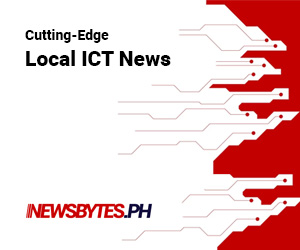The Philippines still relies on anti-virus solutions for its cybersecurity needs even though it should already prepare itself against ransomware threats.

Richard Sheng, Trend Micro senior director for alliances and strategic channels for Asia Pacific, Middle East and Africa, made these remarks, citing the challenges posed by ransomware on traditional anti-virus solutions.
“We see the Philippines is still focused on anti-virus. You have to go beyond anti-virus,” Sheng said during the Security Trends 2017 conference on Oct. 12 in Makati City.
His sentiment was shared by a fellow Trend Micro executive, Myla Pilao, TrendLabs research director. Companies in the Philippines ?need to check [their] defenses…put in the right places,” she said
Defenses must evolve and match the attacks by cybercriminals, Pilao said, as the world of technology is rapidly changing.?She said 2017’s biggest security threats included malware, mobile malicious apps, exploit kits, and online banking malware.
Ransomware is transforming as more hard-hitting, diverse, and targeted; increasing abuse of legitimate system components and remote administration tools; going fileless; worm-like propagation like WannaCry and Petya; and non-Window ransomware families.
“The current hacking attacks on organizations require a drastic change in terms of threat defense. Whatever we are using today is not enough,” she said.
During the event, Trend Micro released its 2017 Midyear Security Roundup, showing that Asia Pacific (APAC) is the most targeted region in cyberattacks.
Based on the report, APAC from January to June accounted for 37.7 percent of all ransomware detection; Europe, Middle East, and Africa (EMEA), placing a far second at 25.24 percent; Latin America, 22.66 percent; and North America, 15.71 percent.
Of the APAC figure, the Philippines has a share of 1.45 percent of ransomware detection.
Trend Micro noted that APAC has the highest vulnerability as it consistently ranked at the top as the most targeted across multiple threat categories, such as from ransomware to malware to online banking.
The security company said this is because of unpatched or un-updated legacy systems, and computing habits that give way to malware transfer.
Nevertheless, the report qualified that Trend Micro detected and blocked 82 million kinds of ransomware for the first six months of 2017 and detected 436 forms of malware with Japan, Australia, and Taiwan registering the highest.
In May and June this year, ransomware WannaCry and Petya respectively made mincemeat of the defenses of more than 300,000 computers worldwide in succession, causing $4 billion in damages to global businesses.
Sheng cited the challenges posed by ransomware on traditional anti-virus solutions, prompting Trend Micro to look at different techniques to combat malware.
“We are now on the next level, (we) introduced machine learning,” he said, adding it is “really training algorithm to automatically determine if an object is a malware. So, we embed multi-layers of security into our anti-malware solutions.”
The Trend Micro executive described machine learning as a “great technology,” but “standalone by itself is ineffective.”
Sheng revealed that in order to understand the Internet of Things (IoT), Trend Micro is investing $100 million on a spin-off company. He said the intent is “purely to understand IoT, how to protect IoT, how to secure that data from IoT.”
The Singapore-based Trend Micro executive said it is very important for security practitioners to be regularly updated on the behavior of cybercriminals.



